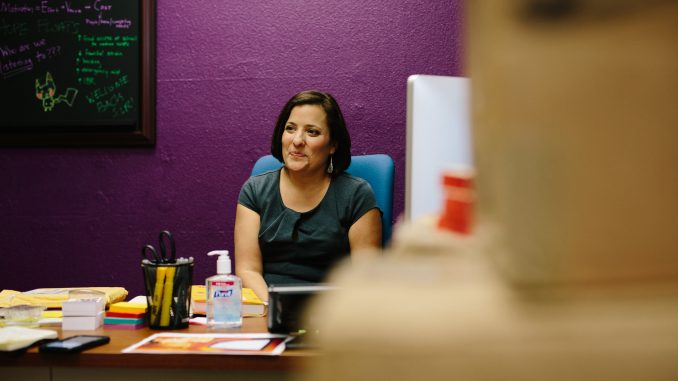
Sara Goldrick-Rab, a higher education professor, raised $133,000 for her Faculty and Student Together Fund, which will be available for students in financial need at the end of January.
The FAST Fund will help students struggling financially by covering the cost of expenses other than tuition, like commuter car payments, textbook fees and housing.
Funds came from private donors, Goldrick-Rab’s public speaking fees and the proceeds of Goldrick-Rab’s book, “Paying the Price: College Costs, Financial Aid, and the Betrayal of the American Dream.”
“It’s pretty clear that college is supposed to help you get out of poverty, but it’s also clear that that’s not really working as planned,” Goldrick-Rab said. “It’s not enough to just write about it. I think we have an obligation, once we know there’s a problem and we can do something about it, to do something about it.”
In November 2017, Goldrick-Rab received a $100,000 prize when her book won the Grawemeyer Award from the University of Louisville. She vowed to match donations to the FAST Fund 3-to-1 until prize money ran out.
“I never had any idea that I could win an award that had money like this that I could really give to students,” Goldrick-Rab said. “I was kind of amazed.”
Goldrick-Rab started the fund in 2016 during her first year at the university. She said the fund currently assists students from six colleges and universities across the country: California State University in Long Beach, Nash Community College, Columbus State Community College, Bunker Hill Community College and Milwaukee Area Technical College. Temple will be the seventh school to participate.
Goldrick-Rab is in the process of selecting university faculty who will decide which students will receive varying grants from the FAST Fund. These faculty members will be chosen based on their commitment to helping students.
“Students don’t apply for the grants, as this would require a complex vetting process to decide who to help,” Goldrick-Rab said. “[Using faculty discretion] is a far simpler and more direct process than a formal program.”
“We look for faculty who are already doing great work to serve students experiencing financial crises,” said Clare Cady, a board member of the FAST fund who helped choose Temple as the seventh school.
Goldrick-Rab said she came to Temple to connect with students and a community that struggles with the issues she researches — income inequality and the affordability of post-secondary education.
“Temple’s history as a working-class institution, and also as a public, urban-serving university were part of the reason I chose Temple,” she said. “Once I thought I could come, I never looked back.”
According to Temple’s 2017-18 “At a Glance” report, 56 percent of undergraduate students receive need-based loans, averaging to $4,580. With average tuition and fees totaling $16,658 for Pennsylvania residents and $28,418 for out-of-state students, an average loan only covers 27 percent of tuition for in-state students and 16 percent for out-of-state students.
On top of covering the remaining tuition, students face everyday life costs. On average, transportation, books and supplies, and other expenses for in-state students at a four-year college total around $4,520 per academic year, according to the College Board.
“I think that there is a great need among Temple students to ensure that they have all their basic needs met so that they can complete school,” Cady said.
“I don’t spend a lot of time trying to decide which students deserve this money, because I think a lot of people deserve this money,” Goldrick-Rab said. “I remember being in college and falling short. I was not a low-income student, and sometimes I fell short. I was a middle-class kid and sometimes it happens.”
Students showed interest in the FAST Fund. Nicolette D’Ambrosio, a freshman business major, said she pays for “everything in day-to-day life,” like her housing and books. D’Ambrosio said she would use the FAST Fund if chosen.
“My dad was helping me, but then he passed away,” D’Ambrosio added. “I’m a waitress, so it’s a lot physically and mentally. I work about 30 hours a week, and sometimes it’s hard to study.”
“I am paying for school on my own because my parents can’t afford it,” said Alexis Cleary, a freshman art education major. “I do worry that I might not be able to afford school after this year. Unfortunately, I don’t qualify for a state grant, but if there were an organization that provided small grants, I would look into it. Even if its a few hundred dollars, every little bit helps.”
This semester, Goldrick-Rab is teaching “Why Care About College,” a U.S. Society General Education course about affording college and her research.
“I’ve always really wanted to know why college isn’t helping students out of poverty and what we can do about it,” Goldrick-Rab said.


Be the first to comment